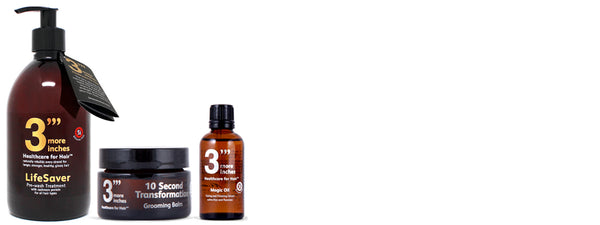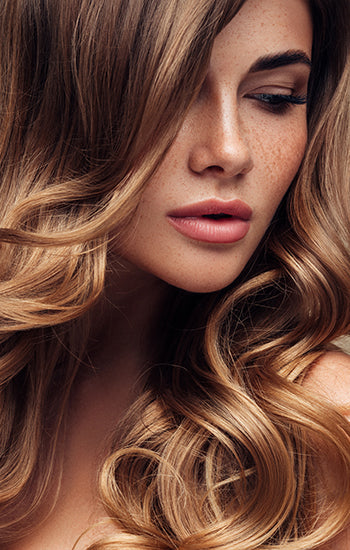February 04, 2022

Lockdowns brought many shifts in behaviour and thinking. Two years in, it’s a very different world and one thing that has changed is people’s tolerance to grey hair.
Before lockdowns most clients pursued a zero-grey policy with all the fervour of the Chinese zero-COVID police. Not a single white hair was tolerated. It dictated the colour strategy and narrowed down choices.
The first lockdown kickstarted an acceptance of grey hair (needs must) and the return back to salons prompted methods to allow grey to feature in a more natural pallet of colouring.
More people are now at ease with showing some white hair. Coverage can be more translucent, or some white hairs are left as part of the blend of colours that make up the whole effect. I think that’s a good thing if it suits the individual. It means a much more natural effect which generally lasts longer and needs less maintenance. But it doesn’t mean doing nothing. Whilst some people definitely look better than most with striking white hair, for the majority it’s ageing and draining. Between leaving it white or going boot-polish black, there’s a wealth of opportunity to enhance and beautify colour when skilfully designed and applied.
The following are some of the most frequent questions we get asked about grey hair.

 Left: 95% white hair. Right: 15% white hair - 70% in the front patch
Left: 95% white hair. Right: 15% white hair - 70% in the front patch
Technically there’s no such thing as a grey hair, it either has colour on has no colour in which case it is white. The collective ratio of white to dark gives different degrees of grey effect. A hair follicle doesn’t fade to white. Pigment is produced for the hair follicle and then the follicle is signalled to stop at which point the hair grows white. On brunettes and darker blondes the rest of the hair loses tone as we age so even if it hasn’t turned white it’s slowly moving towards a flatter shade of charcoal.

Grey blending is colouring out a percentage of white hair. Not to cover completely, but to lessen the amount of white hair and reduce regrowth contrasts. It may be to target some areas more than others or highlight areas of brilliant white density that the client likes.
 How does hair change when it begins to turn grey?
How does hair change when it begins to turn grey?Hair texture changes when the pigment is lost (white hair) the texture can become coarse, wiry, and less flexible. Often people who colour their hair forget this happens to the texture of the hair, so whilst it looks the same, the texture can be very different, and not behave as it did ten years before.
 Does this affect the way you treat it in-salon?
Does this affect the way you treat it in-salon?We approach white hair differently for colouring. It can be very resistant so may need a stronger colour mixture to get 100% coverage. There are lots of techniques you can use to blend white/grey hair with the natural colour to minimise maintenance. We consider what level of coverage the client wants. More women are accepting of some white showing. And we ask what sort of maintenance programme they are willing to commit to?
 What would you suggest for natural blondes?
What would you suggest for natural blondes?White hair notices least on blonde hair so they naturally have less contrast, and the blend will be much softer on them compared to a brunette or red head.
 What would you suggest for naturally dark hair?
What would you suggest for naturally dark hair?White hair shows the most against the dark background and brunettes tend to turn white the earliest too. Diffusing the effect with multiple tones helps blend white hair and a brown colour conditioning gloss can take the edge of the white hairs remaining, without destabilising the natural base colour.
 What would you suggest for natural redheads?
What would you suggest for natural redheads?Redheads are fortunate in turning white the slowest. Cool or warm blonde lights easily cover some white hairs and bridge the gap between those that are left. Natural blondes, red heads and brunettes can use blonde, red-pigmented and brunette shampoos to enhance their natural pigments.
 What home care would you suggest for coloured hair?
What home care would you suggest for coloured hair?All coloured hair should be treated with colour-protecting shampoo and conditioner and a weekly treatment to keep the hair in the best possible health. 3MI UV Protective Shampoo and Conditioner and LifeSaver Pre-wash Treatments twice weekly for every hair type. This combination keeps colour and health better than anything else we’ve tried.
 Some women’s hair turns grey at the front initially. What should they ask for in the salon if they want to embrace the grey?
Some women’s hair turns grey at the front initially. What should they ask for in the salon if they want to embrace the grey?If clients want to embrace their grey, they could ask for a grey pigmented shampoo or toners to enhance the grey. This may be about eliminating brassiness with our Silver Blonde Shampoo and Conditioner or creating more of a steely effect with a colour conditioning gloss.
 Is there anything specific people with grey hair should be doing at home that differs from pigmented hair?
Is there anything specific people with grey hair should be doing at home that differs from pigmented hair?It’s generally more fragile and dehydrated so needs more nourishment and feeding. Regular LifeSaver Pre-wash Treatment. And moisturising finishing products such as Magic Oil and Ten Second Transformation

 Does this advice also apply to women with afro hair?
Does this advice also apply to women with afro hair?Afro hair would be treated the same, but bear in mind afro hair is generally more fragile and dehydrated, so needs extra care.
March 24, 2023
March 20, 2023
March 20, 2023
How many Bobs have you got?
These quick clunky haircuts are becoming prolific as hairdressers become less and less able to layer hair properly. Emily had the very common 3-step Bob. The baseline, a step four inches off the bottom, and a sort of torn irregular piece suggestive of a long

Exclusive Offers Every Month
Sign up to our newsletter to receive 15% off your first order.